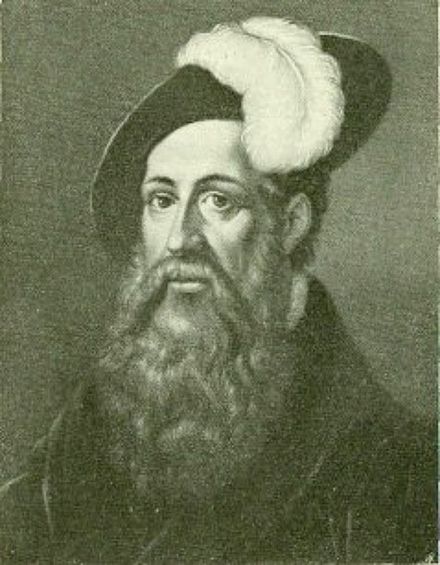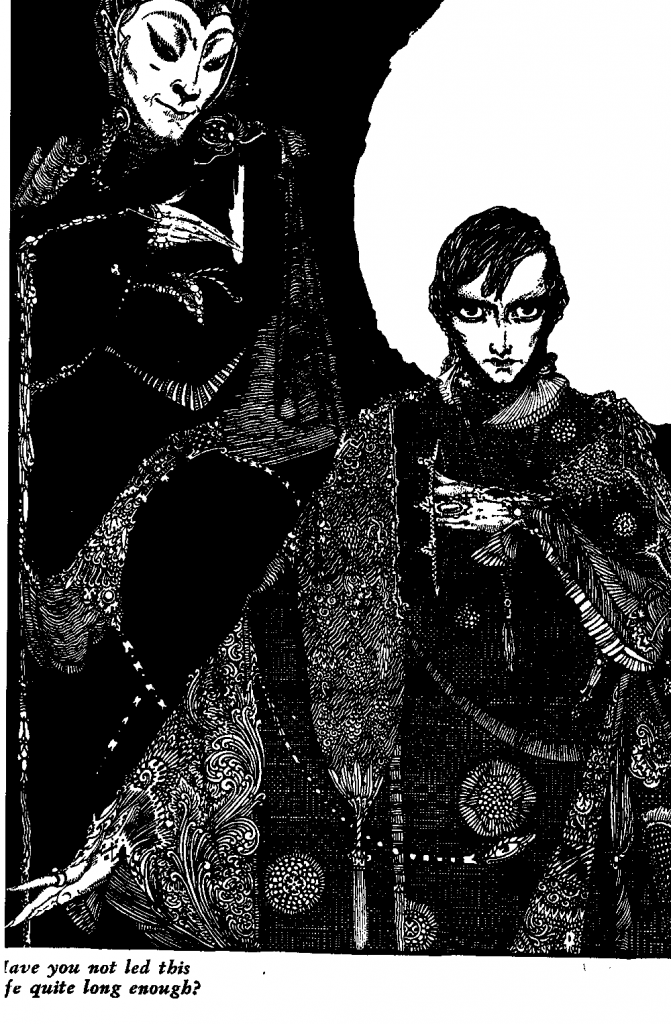The story of the printing press has been a staple of the beginning of books, design and illustration. In the timeline of illustration history, I find the ancient process of woodcuts and metal print to be so fun and interesting, because of the different styles that emerged from older designs made to represent many things, simple for replication, show a story from the bible, and also has to make sure everyone can understand it, even for those who are illiterate.
I am currently getting back into lino cut art, its interesting to learn about such an old practice. But, I am much more interested in Johann Fust and his experience being accused of witchcraft and trickery!!!
For context, Johannes Gutenberg (1400-1468) was the man first credited to be the inventor of the printing press in Strasbourg, Germany. It was the first instance of book copying and reprinting in Europe, which he began operating in around 1430. Johann Fust ( 1400 – 1466 ), Gutenbergs’ business partner, worked to help finance and create the printing press to mass produce the Bible, later known as the Gutenberg Bible. The printing press had a significant impact on the intellectual revolution of the renaissance though not at first and not for Gutenberg himself.


Fust (Source) & Gutenberg (Source)
Johann Fust was not known to be a printer but a businessman and salesman. When he funded Gutenburg for his invention, it was a very expensive undertaking, first providing 800 guilders (with a % 6 interest, from my research it would be 296,538.41 Canadian Dollars in 2021.) and then another 800 guilders later on once Gutenberg got a hold on the progress, Fust then found the need to partner up with Gutenberg, since he invested so much money into the project.
After years of work on the Gutenberg bible, just before the project was due to be completed with only 3 bibles left, Fust sued Gutenberg for breach of contract, and his press and types became Fust’s property. This was because Gutenberg could not repay the fees back in time for the contract they made. Fust and his brother-in-law, Peter Schöffer (1425-1503) carried on the work begun by Gutenberg, And started to distribute the holy bibles, they were also the first to use colour in their prints, with blue and red.
50 Bibles were printed in Mainz from 1455 onwards, some out of vellum, but most out of paper. Johann Fust travelled across Europe to sell to King XI of France and others who could afford a copy in Paris. Back in the day, there was almost nothing to show the small differences and flaws in these printed copies from previous illuminated manuscripts, it is said that when the public first set eyes on them, it looked like someone had magically been able to write identical copies using magic as well as using blood as ink.
The French almost threw him in jail for black magic, In order to prove the mortal powers of printmaking and to escape a jail sentence, Fust was forced to spill how the bibles were rapidly produced and identical. He feared that the technology Gutenberg developed would quickly be learned and stolen by bootleggers.

Something super interesting that I found is that throughout history, especially in folklore, is that Johann Fust is sometimes confused with Faust and has even been nominated by references throughout the years as possibly the original Faust by some. Johann Faust, Doctor Faustus, or popularized by Christopher Marlow play, “The Tragical History of Doctor Faustus” is a German legend of a man who trades his soul to satan for otherworldly knowledge and pleasures. Johann Fust was often contributed to Faust before Marlow’s story in 1587, and Goethe’s German Text of Faust in 1829, even though Faust was based on the historical Johann Georg Faust (c. 1480–1540). Too many Johanns. Too many Fausts.
In conclusion, the story of Fust the magician distributing the evil Gutenberg bibles is possibly one that isn’t fully recorded properly, since so many mistook Fust and Faust and clumped them together, Elizabeth L. Einstein, the 20th Century author of The Printing Press as an Agent of Change, Cambridge University Press, 1979, conducted a journal where she suggests that most older references to Fust and his bible were associated with “divine rather than diabolical power.”
References:
Wikimedia Foundation. (2022, May 13). Johann Fust. Wikipedia. Retrieved October 19, 2022, from https://en.wikipedia.org/wiki/Johann_Fust
Fust, Johann. (2018). In P. Lagasse, & Columbia University, The Columbia encyclopedia (8th ed.). Columbia University Press. Credo Reference: https://ezproxy.capilanou.ca/login?url=https://search.credoreference.com/content/entry/columency/fust_johann/0?institutionId=6884
https://iisg.amsterdam/en/research/projects/hpw/calculate.php
British Library Board. (n.d.). Gutenberg Bible. British Library. Retrieved October 19, 2022, from https://www.bl.uk/collection-items/gutenberg-bible
Cook, J. W. (2014). printing in the Renaissance. In J. W. Cook, Encyclopedia of Renaissance literature (2nd ed.). Facts On File. Credo Reference: https://ezproxy.capilanou.ca/login?url=https://search.credoreference.com/content/entry/fofrl/printing_in_the_renaissance/0?institutionId=6884
Wikimedia Foundation. (2022, August 26). Faust. Wikipedia. Retrieved October 19, 2022, from https://en.wikipedia.org/wiki/Faust
Broekhuizen, J. S. (1967). Faust and Fust: A case of mistaken identities (thesis). Texas.